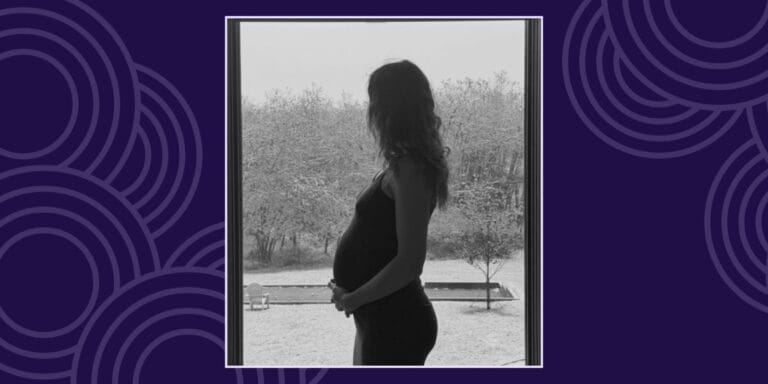Abruption
Table of Contents
Definition
Abruption, in the context of motherhood, refers to a serious pregnancy complication known as placental abruption. It is when the placenta detaches from the inner wall of the uterus before delivery, either partially or completely. This can deprive the baby of oxygen and nutrients, causing heavy bleeding in the mother and could potentially be life-threatening for both mother and baby.
Key Takeaways
- Abruption, or more formally ‘placental abruption’, refers to a serious pregnancy complication where the placenta peels away from the inner wall of the uterus before delivery. This condition can deprive the baby of oxygen and nutrients, and cause heavy bleeding in the mother.
- Placental abruption can occur without any obvious symptoms, but common signs include sudden-onset stomach pain, vaginal bleeding, and rapid contractions. It’s crucial to seek immediate medical attention if these symptoms occur as it can be life-threatening for both the mother and baby.
- Risk factors for abruption include high blood pressure, trauma to the stomach, smoking, drug usage, a previous occurrence of placental abruption or conditions that increase the risk of blood clotting, such as thrombophilia. But it’s important to note that abruption can happen without these risk factors.
Importance
The term “Abruption” in motherhood is vitally important as it refers to placental abruption, a serious medical condition that can occur during pregnancy.
Placental abruption is when the placenta separates from the inner wall of the uterus before birth, which can deprive the baby of oxygen and nutrients, leading to severe complications such as premature birth, low birth weight, and even stillbirth.
It can also pose significant health risks for the mother, including heavy bleeding that can lead to shock or possible coagulation complications.
Therefore, understanding the term “Abruption” is crucial to recognizing a potentially life-threatening situation for both mother and child during pregnancy.
Explanation
Abruption, in the context of motherhood, pertains to a medical condition known as placental abruption. The purpose of recognizing and understanding this term is crucial in ensuring the health and safety of both the mother and the fetus during pregnancy. The placenta, which provides the unborn child with nutrients and oxygen, typically attaches itself to the walls of the uterus.
Abruption occurs when the placenta prematurely separates from the uterine lining. This distressed state can potentially lead to severe complications for both the mother and baby, making this term especially significant. Abruption is essentially a symptom used to signal potential risks and issuing a warning to take immediate medical action.
The recognition of this condition will aid in reducing the chances of severe blood loss in a mother, which could lead to shock and even fatality. For the fetus, a lack of nutrients and oxygen due to abruption can result in growth problems, premature birth, or in worst cases, stillbirth. Understanding abruption can help in prompt diagnosis and intervention to manage this severe pregnancy complication.
Examples of Abruption
“Abruption” in motherhood generally refers to placental abruption, a serious pregnancy complication where the placenta detaches from the uterus earlier than expected. Here are three real-world examples:
A pregnant woman in her third trimester goes for her regular check-up. Her blood pressure is higher than average, and she’s experiencing severe abdominal pain. After examining her, the doctor suspects placental abruption and calls for an immediate ultrasound to confirm.
A pregnant woman involved in a car crash is rushed to the hospital. The doctors find that she has suffered a minor placental abruption as a result of the accident’s impact. Fortunately, both she and her baby are stabilized after quick medical intervention.
A woman who smokes and drinks regularly during pregnancy is admitted to the hospital with significant vaginal bleeding. An ultrasound confirms that she has experienced placental abruption, likely exacerbated by her unhealthy lifestyle habits. She is quickly rushed in for an emergency C-section to ensure the safety of her and the baby.
“`html
Frequently Asked Questions about Abruption
What is abruption?
Abruption, or placental abruption, is a serious condition in which the placenta separates from the uterus before the baby is born. This can cause severe bleeding and can be life-threatening for both the mother and the baby.
What are the symptoms of abruption?
The most common symptoms of abruption include sudden onset of severe abdominal pain, vaginal bleeding, and rapid uterine contractions. If you’re experiencing these symptoms, seek medical help immediately.
What causes abruption?
Exact causes of abruption are unknown, but risk factors may include high blood pressure, previous history of abruptions, smoking during pregnancy, drug use, and trauma or injury to the abdomen.
How is abruption diagnosed?
Abruption is usually diagnosed based on symptoms and a physical exam, though ultrasound may also be used. However, not all abruptions are visible on ultrasound, so other diagnostic methods may be necessary.
How is abruption treated?
Treatment for abruption depends on the severity and timing of the condition, but may include hospitalization, blood transfusion, medication to help the baby’s lungs mature faster, or immediate delivery of the baby.
“`
Related Motherhood Terms
- Placenta
- Prenatal Care
- High-Risk Pregnancy
- Cesarean Section
- Postpartum Hemorrhage
Sources for More Information
- Mayo Clinic – Offers expert insight regarding medical conditions and procedures including abruption.
- WebMD – A source of professional health advice and information about various medical conditions, including abruption.
- World Health Organization (WHO) – International authority for health within the United Nations system.
- National Library of Medicine (NLM) – The world’s largest biomedical library offers up-to-date information on numerous health topics, including abruption.



















